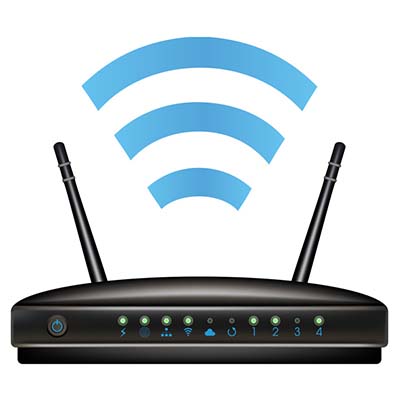A communication device is any type of hardware capable of transmitting data, instruction and information between a sending device and a receiving one. In computing the devices in question are usually computers (sometimes called hosts). Since computers process data as digital signals, communication with them also has to be via digital signals. Information can be transmitted in either its analog or digital form depending on the communication channel used. An analog signal is one which consists of a continuously varying wave while a digital one consists of individual pulses each of which represents a bit.
Table of Contents
Modems
The name comes from modulator/demodulator. This is an electronic device which is used to convert digital data signals from computers or routers to analog ones which are suitable for transmission over analog telecommunication circuits. For communication channels which transmit digital signals (such as those used by cable television), the modem transfers data from the computer to the channel. If the communication channel however uses analog transmission, the data from the computer must first be converted to an analog signal (modulation) before being transferred to the channel while the signal received through the channel is similarly first converted into a digital one (demodulation). Modems therefore make it possible for established telecommunication systems—some of which were never designed to carry data—to support a wide variety of digital data communications. Modems come in different forms and each kind is designed to allow computers to communicate over specific telecommunication channels and technologies.
Dial-up modems
These are modems which use standard telephone lines to transmit and receive information. To make the dial-up connection, the modem must first connect to an active phone line that is not in use i.e. when no one is currently on a phone call. When connecting, the modem dials a number that will connect it to an internet service provider. Once connected, the modem can then decode the analog signal received from the ISP into a digital one which is sent to a router or computer; it also receives digital signals from the computer and encodes these into analog signals which can in turn be sent via the same telephone line to the ISP. This allows dial-up modems to access the internet wherever there is a working telephone line, no matter how remote the area is. However by modern standards dial-up connections are considered to be extremely slow.
DSL modems
DSL (Digital Subscriber Line) systems are a technology which provides high speed internet over conventional telephone lines. DSL modems are also known as DSL terminal adapters. Each DSL subscriber has a dedicated line, so unlike its closest competitor cable internet, adding more subscribers to the network does not affect its speed and quality. One of the biggest advantages of DSL modems over dial-up ones is that the user can access the internet while a call is being made.
There are other varieties of DSL such as ADSL (asynchronous digital subscriber line) which have been developed to improve the capabilities of the technology. Asynchronous here means that the downlink (incoming) data rate is greater than the uplink (outgoing) one.
Cable modems
These modems are used to convert digital data signals from analog and vice versa for transmission and receipt over cable television (CATV) lines. Data can be transferred over cable TV lines faster than through telephone ones. This is because cable systems were designed to carry high quality television signals which also require higher data rates. Cable modems usually just use the cable network to connect to an Internet Service Provider (ISP) which in turn connects them to the internet. The modem is usually connected to a router or personal computer via an Ethernet connection.
Wireless modems
These communicate via conventional cellphone networks. The computer, or other device used to access the internet, is connected to the wireless modem which in turn is connected to a cell phone network. These modems require subscriber identity modules (SIMs) just like ordinary cell phones in order to connect to these networks. Speeds are determined by both the capability of the modem’s hardware and the level of advancement of the technology used by the mobile network operator i.e. the “generation” of the mobile wireless technologies used.
Network cards
A network interface card (NIC) also known as the network interface controller, network adapter, LAN adapter or physical network interface is a computer hardware component that connects it to a network. The NIC allows computers to communicate over a computer network, either by using cables or wirelessly. The kinds of networks which these devices can connect to include Ethernet, Wi-Fi and Fibre Channel.
Wireless access points
These are central communications devices which allow computers and other devices with networking capabilities to transfer data wirelessly to a wired network. They use high quality antennas for optimal sending and receiving of signals.
Routers
These are devices which forward data packets along networks. A router is connected to at least two networks; commonly two LANs (local area networks) or WANs (wide area networks) or a LAN and its ISP’s network. These are located at gateways—places where two or more networks connect. Routers usually determine the best path for forwarding packets and they can communicate with each other to configure the best route to transmit data between any two computers.





